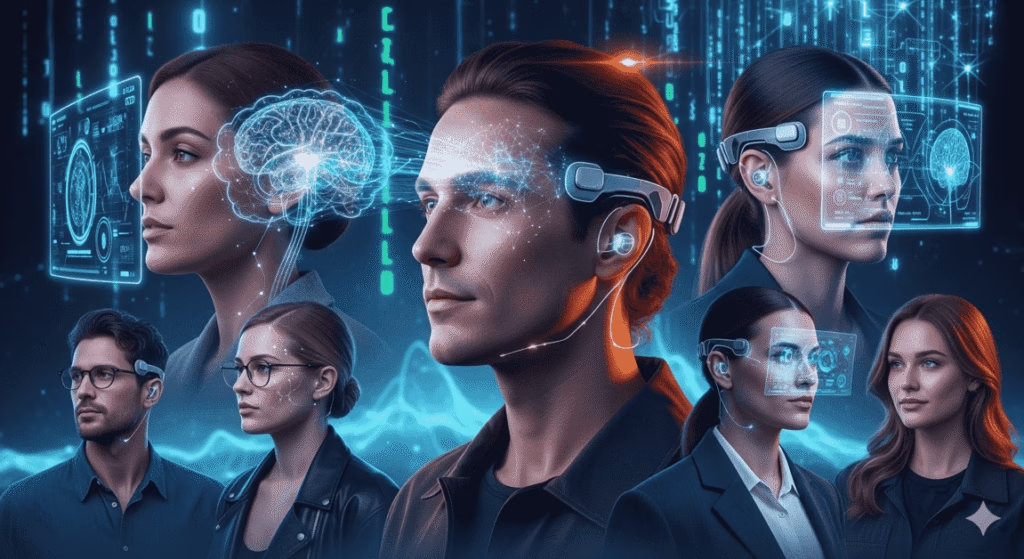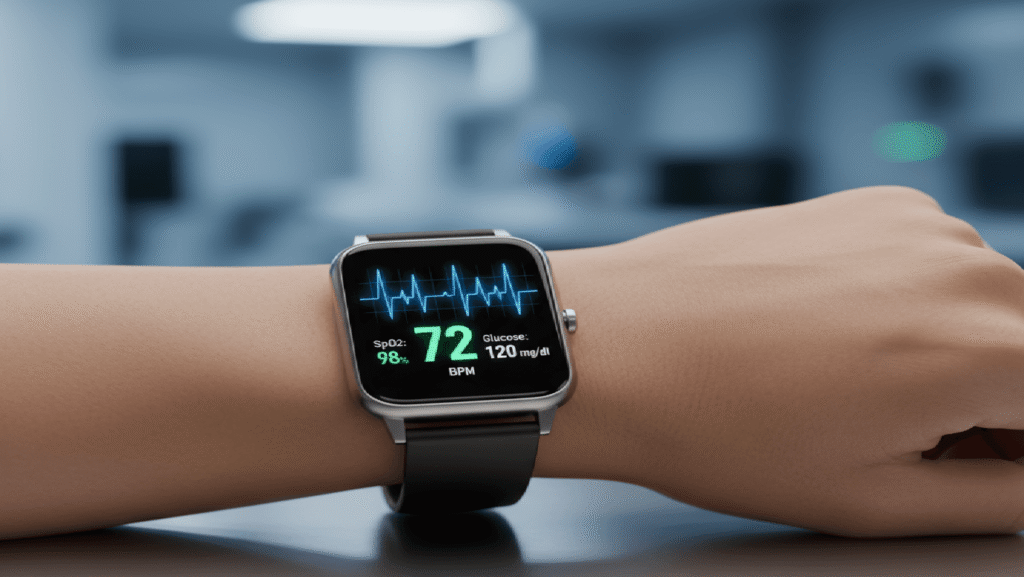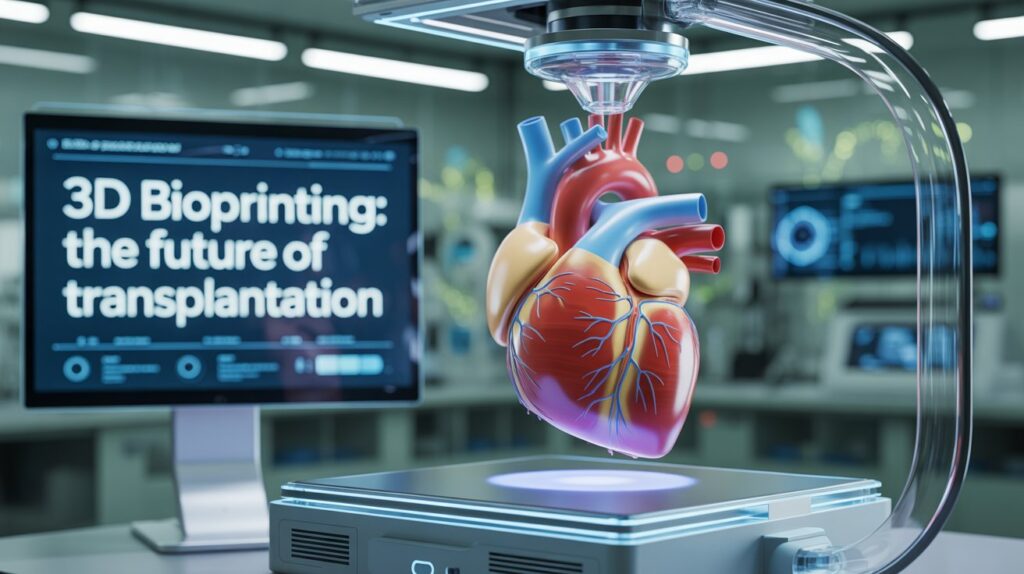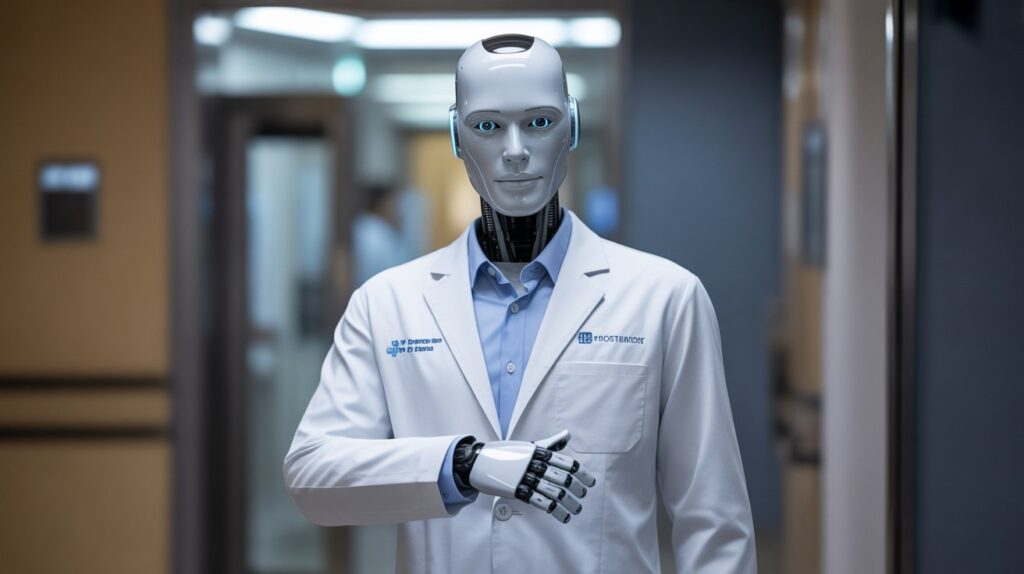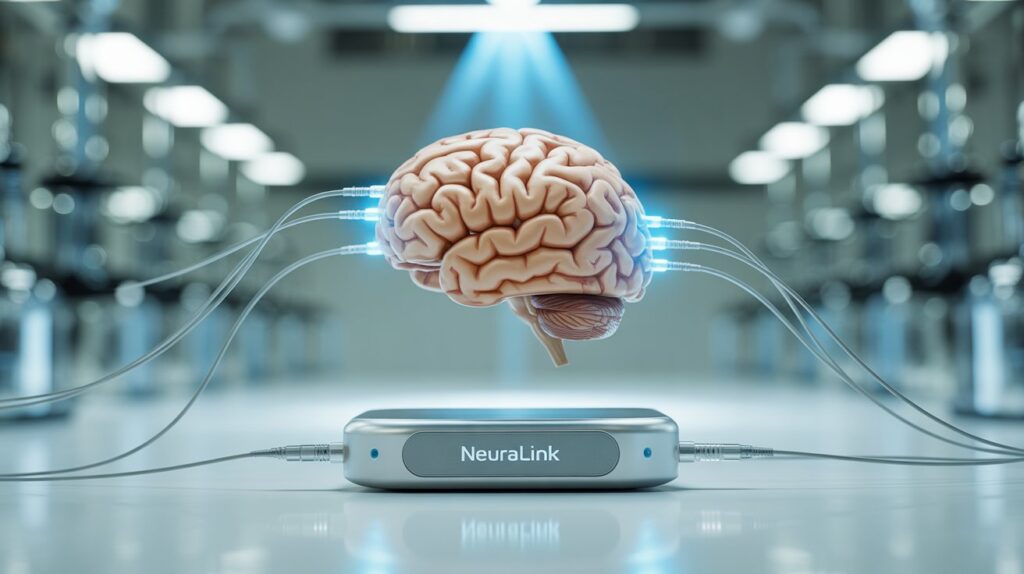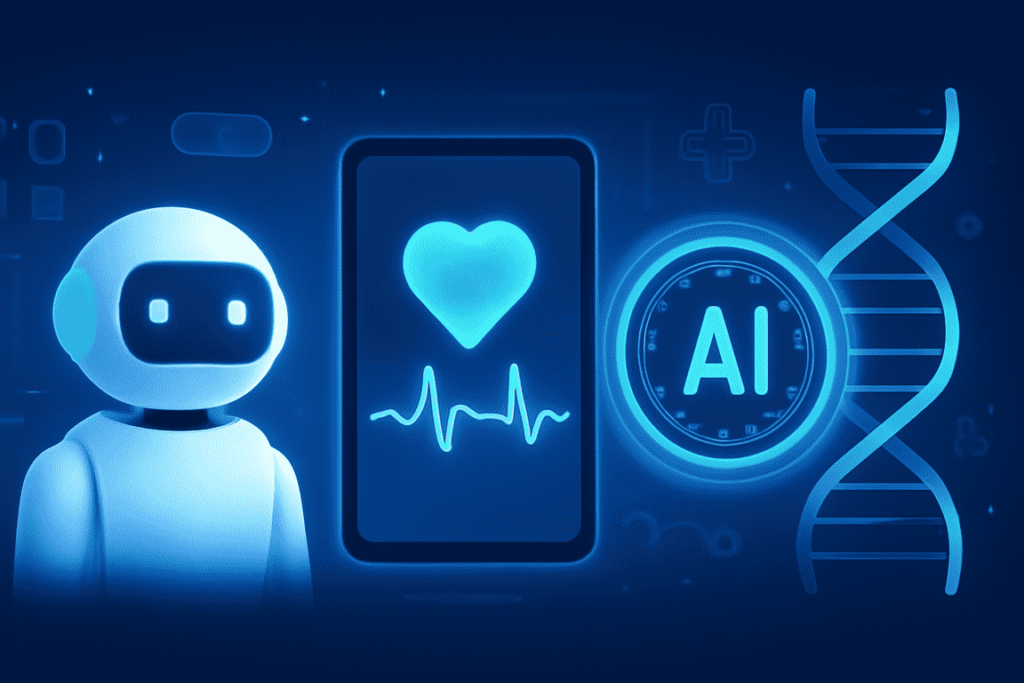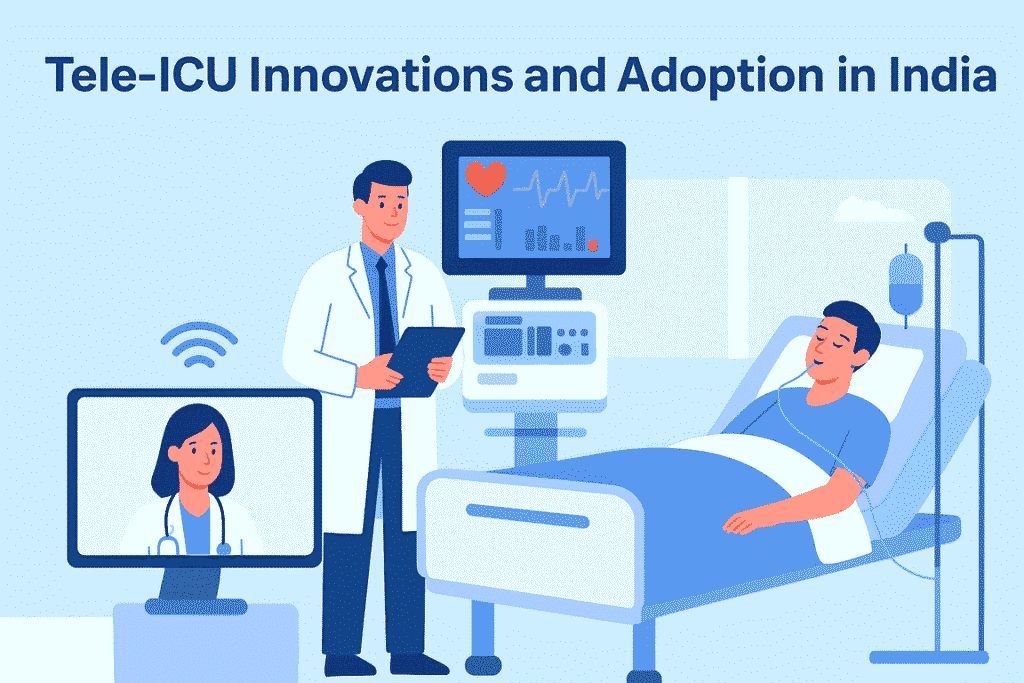Introduction
Brain-Computer Interfaces (BCIs) are transforming the way medicine approaches paralysis, stroke rehabilitation, movement disorders, and patient communication. Once the realm of science fiction, BCIs are now at the forefront of neurotechnology, offering real possibilities for restoring independence and quality of life.
This article explores the medical potential of BCIs, including BCI applications in healthcare and highlights recent breakthroughs, and offers links to pioneering projects such as BrainGate, NeuroSky, Emotiv, and landmark research published in The Lancet Neurology.
🔎 What are Brain-Computer Interfaces?
Brain-Computer Interfaces (BCIs), also known as Brain-Machine Interfaces (BMIs), are systems that enable direct communication between the human brain and external devices. Unlike traditional input methods such as keyboards or touchscreens, BCIs bypass muscles and nerves, relying instead on brain signals to control technology.
🔹 How BCIs Work in Simple Steps:
- Signal Acquisition – Electrodes or sensors (non-invasive like EEG caps, or invasive like implanted electrodes) record electrical activity from the brain.
- Signal Processing – The raw brain signals are cleaned, amplified, and translated into patterns that computers can understand.
- Decoding – AI and machine learning algorithms interpret these signals into specific commands (e.g., “move arm forward”).
- Device Control – The decoded commands are sent to external systems like a wheelchair, robotic arm, computer cursor, or speech synthesizer.
- Feedback Loop – Patients often receive real-time visual or auditory feedback, which improves accuracy and helps train the brain to control the interface better.
🔹 Types of BCIs:
- Non-Invasive BCIs: Use scalp electrodes (EEG, fNIRS). Safe, widely used, but with lower accuracy.
- Invasive BCIs: Implanted directly in the brain. Higher precision but surgical risks involved.
- Partially Invasive BCIs: Electrodes placed inside the skull but outside brain tissue. Balance between accuracy and safety.
🔹 Why BCIs Are Revolutionary:
- They bypass damaged nerves, offering hope to patients with spinal cord injuries, strokes, ALS, or other motor impairments.
- They create a new communication channel for people who cannot speak or move.
- They serve as a research window into the brain, helping doctors understand neurological diseases more deeply.
🏥 Medical Potential of BCIs
1. Restoring Movement in Paralysis
A landmark 2019 study in The Lancet Neurology demonstrated that a tetraplegic patient could control all four limbs using a BCI-powered exoskeleton after intensive training.
Impact:
- Restores mobility in severe spinal cord injuries.
- Paves the way for real-world assistive exoskeletons.
2. Stroke Rehabilitation
Stroke remains one of the leading causes of long-term disability.
- BCIs retrain the brain by encouraging neuroplasticity.
- Ongoing BrainGate clinical trials explore how BCIs may accelerate recovery.
3. ALS and Communication
Patients with ALS often lose the ability to speak or move.
- BCIs convert brain signals directly into text or speech.
- The BrainGate Project has enabled ALS patients to type and control devices with thought alone.
4. Home-Based Rehabilitation
Non-invasive BCIs are moving into homes.
- NeuroSky provides affordable EEG headsets for attention, relaxation, and wellness tracking.
- Useful in stroke rehab and patient self-monitoring
5. Movement Disorders (Parkinson’s, Epilepsy, etc.)
BCIs show promise in:
- Monitoring seizures in epilepsy.
- Modulating motor activity in Parkinson’s.
- Providing neurofeedback for tremors.
Industry Innovator: Emotiv develops wireless EEG technology for clinical and research applications.
✅ Benefits of BCIs in Medicine
The medical benefits of Brain-Computer Interfaces are wide-ranging, touching on physical, psychological, and even social aspects of patient care.
1. Restoring Independence
- Mobility: Patients with paralysis can control wheelchairs, robotic arms, or exoskeletons.
- Communication: ALS patients can express themselves again, reducing isolation and depression.
- Daily Life Tasks: From switching on lights to controlling a TV, BCIs restore basic independence.
2. Personalized Rehabilitation
- Adaptive Therapy: BCI systems can be tailored to the patient’s brain activity, adjusting therapy intensity.
- Neuroplasticity: Repeated training encourages the brain to rewire itself, accelerating recovery after strokes.
- Motivation Boost: Patients see real-time feedback of their brain activity, which can increase engagement in therapy.
3. Enhancing Quality of Life
- Psychological Benefits: Regaining even small degrees of control reduces feelings of helplessness.
- Reduced Caregiver Burden: BCIs can allow patients to perform tasks without constant assistance.
- Integration with AI & IoT: Smart-home integration can let patients control their environment with thought.
4. Continuous Health Monitoring
- BCIs can detect early signs of seizures in epilepsy patients.
- They can monitor cognitive fatigue in stroke survivors.
- In the future, BCIs may detect degenerative changes (like Parkinson’s progression) earlier than clinical signs.
5. Societal Benefits
Sparks innovation in neurotechnology, with spillover applications in wellness and mental health.
Lower long-term costs by reducing hospital admissions and caregiver dependency.
Opens up education and work opportunities for disabled individuals.
- Improved independence for patients.
- Personalized rehabilitation after stroke.
- Enhanced communication for ALS.
- At-home affordable solutions for recovery.
- Continuous disease monitoring.
⚠️ Challenges & Ethical Concerns
- Surgical risks in invasive BCIs.
- Signal accuracy limits in non-invasive EEG.
- Cost barriers for widespread use.
- Ethical issues: privacy, autonomy, human enhancement debates.
🔮 The Future of BCIs in Medicine
The coming decade will likely see Brain-Computer Interfaces transition from research labs into hospitals, rehabilitation centers, and even homes.
1. Technological Breakthroughs Ahead
- AI-driven BCIs: Machine learning algorithms will decode brain signals more accurately, making BCIs faster and more reliable.
- Non-invasive Wearables: Dry electrodes and wireless EEG headsets will make BCIs more comfortable and usable in daily life.
- Hybrid Systems: Combining BCIs with VR, robotics, and neurostimulation for a more immersive rehabilitation experience.
2. Expanding Clinical Applications
- Stroke Recovery: Integration of BCIs into standard physiotherapy programs.
- ALS & Communication: More advanced “speech prostheses” that can achieve natural conversation speeds.
- Parkinson’s & Epilepsy: Closed-loop BCIs that detect abnormal brain activity and automatically deliver corrective stimulation.
3. Integration into Healthcare Systems
- At-home Monitoring: BCIs linked with telemedicine platforms for real-time clinician oversight.
- Insurance Coverage: As evidence grows, health insurers may cover BCI therapy as standard care.
- Rehabilitation Clinics: BCI devices may become as common as treadmills and physiotherapy robots in rehab centers.
4. Ethical & Societal Outlook
- Stronger debates on privacy and autonomy: who controls brain data?
- Regulations will need to catch up as BCIs enter everyday medical use.
- Public acceptance will grow as patients share success stories.
5. Vision for 2035
- BCIs could be as commonplace as pacemakers are today.
- Disabled individuals may achieve full digital inclusion with mind-controlled devices.
- Medicine may enter a new era of “neuro-prosthetics”, blurring the line between biology and technology.
Within the next decade, expect to see:
- Affordable wearable BCIs in rehabilitation centers.
- Standard-of-care ALS and paralysis solutions.
- AI-powered decoding for higher accuracy.
- Integration with telehealth and at-home care.
📊 Infographics
Infographic 1: How BCIs Work in Medicine
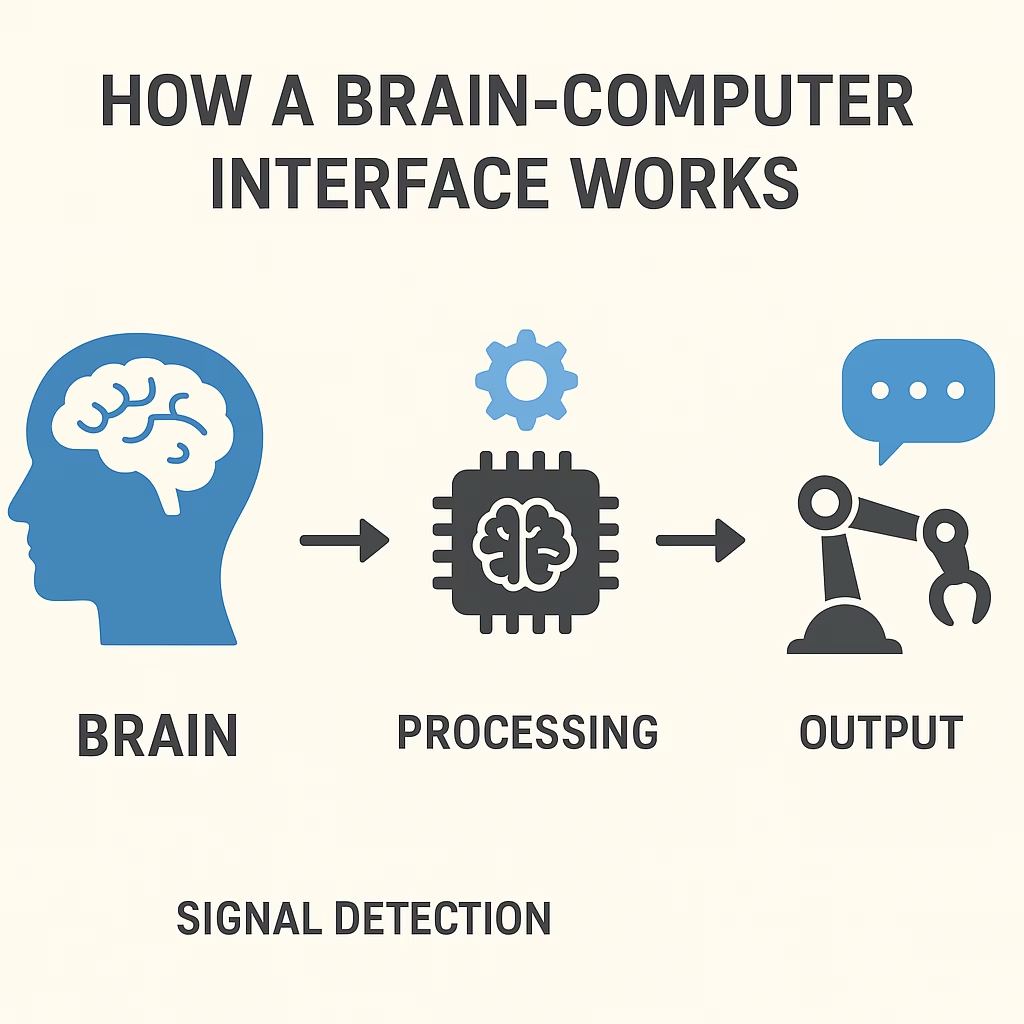
Infographic 2: 5 Medical Applications of BCIs
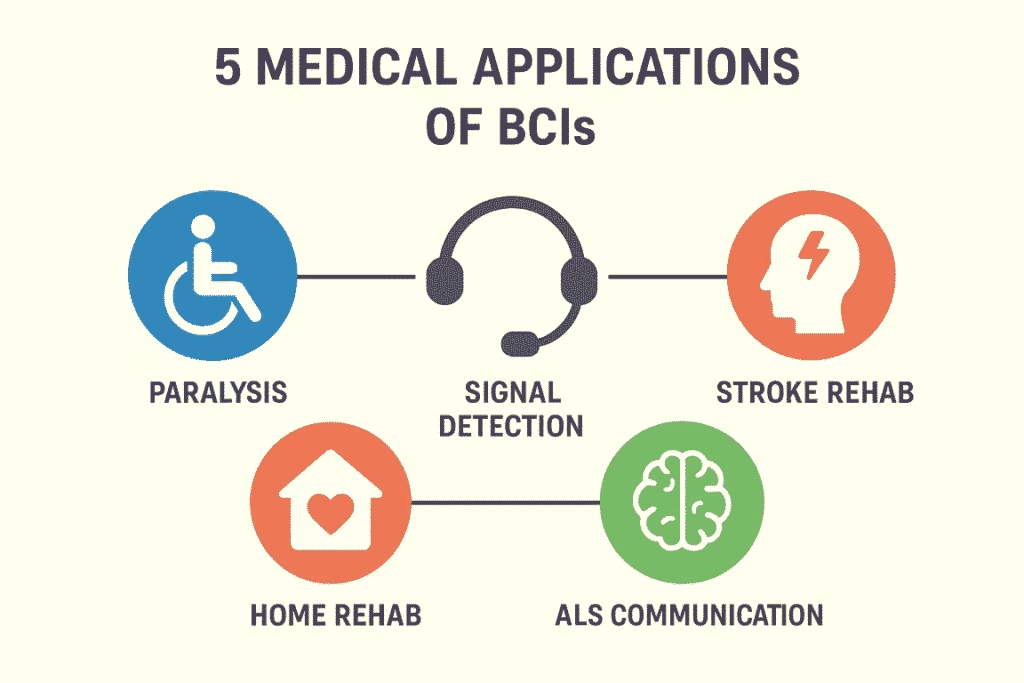
📚 Further Reading & References
- The Lancet Neurology study on BCI exoskeletons → Read summary
- BrainGate – About | BrainGate Clinical Trials
- NeuroSky Official Site
- Emotiv Official Site
✨ Conclusion
Brain-Computer Interfaces are no longer science fiction. From restoring movement in paralysis to enabling ALS patients to communicate, BCIs are redefining the future of medicine. With projects like BrainGate and industry leaders such as NeuroSky and Emotiv, the coming decade may see BCIs become a mainstream medical reality.
To further explore the cutting-edge advances in brain-computer interfaces, especially the revolutionary work being done in wireless, implantable technology, check out our detailed article on Elon Musk’s Neuralink. Neuralink’s implantable brain chip, known as the “Link,” is pioneering new frontiers in medical rehabilitation and human augmentation, with ongoing human trials demonstrating promising control of digital devices purely through thought. Delve deeper into how Neuralink combines advanced robotics, high-density electrode arrays, and AI-driven signal processing to push the boundaries of restoring communication and movement in paralyzed patients and beyond. .
FAQS
What is a Brain-Computer Interface (BCI)?
A Brain-Computer Interface (BCI) is a technology that allows direct communication between the human brain and an external device. It bypasses muscles and nerves, enabling control of computers, prosthetics, or other systems through brain signals.
How do BCIs work?
BCIs detect electrical signals from the brain using electrodes or sensors. These signals are processed by algorithms and translated into commands that can control external devices such as robotic arms, wheelchairs, or communication software.
Are BCIs safe?
Non-invasive BCIs (like EEG-based systems) are generally safe and widely used in research and clinical settings. Invasive BCIs (which require surgery) carry risks such as infection or tissue damage but provide higher accuracy and performance.
Who can benefit from BCIs?
BCIs are especially beneficial for individuals with conditions such as:
Paralysis (spinal cord injury)
Stroke survivors
ALS (Amyotrophic Lateral Sclerosis) patients
Movement disorders such as Parkinson’s disease
They can help restore mobility, enable communication, and support rehabilitation.
Can BCIs be used by healthy people?
Yes. While BCIs are primarily developed for medical purposes, healthy users can use BCIs for applications such as gaming, meditation tracking, virtual reality, and controlling smart devices. However, these are still early-stage consumer applications.
What are the limitations of current BCIs?
High cost of research and devices
Limited speed and accuracy in non-invasive systems
Invasive BCIs require brain surgery, which has associated risks
Ethical and privacy concerns about brain data
What is the future of BCIs in medicine?
The future of BCIs looks promising, with ongoing advancements expected to:
Enable neural prosthetics that restore full limb movement
Improve rehabilitation therapies for stroke and spinal cord injury
Provide seamless communication for locked-in patients
Expand into mental health treatments for depression, PTSD, and anxiety

